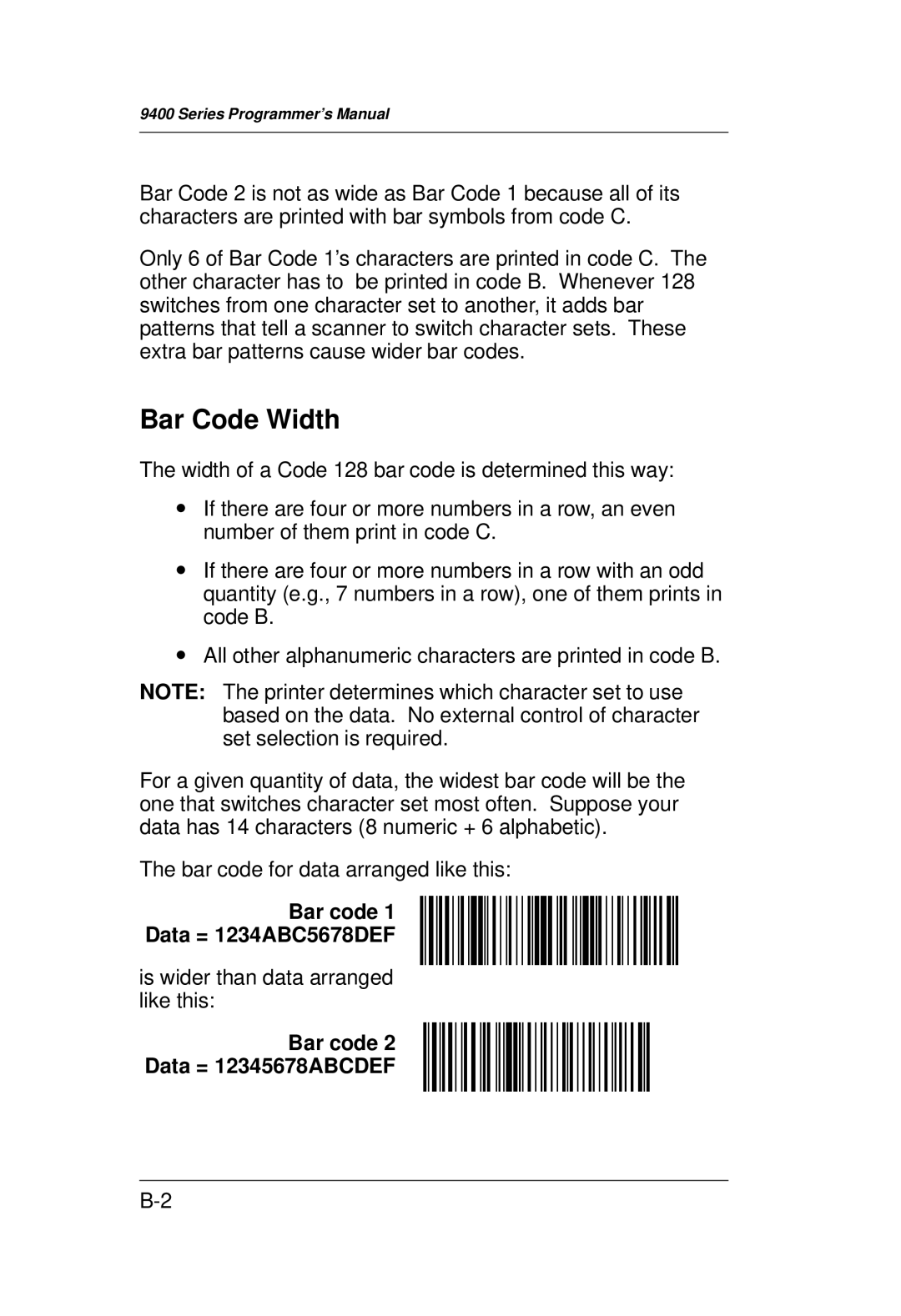
9400 Series Programmer's Manual
Bar Code 2 is not as wide as Bar Code 1 because all of its characters are printed with bar symbols from code C.
Only 6 of Bar Code 1's characters are printed in code C. The other character has to be printed in code B. Whenever 128 switches from one character set to another, it adds bar patterns that tell a scanner to switch character sets. These extra bar patterns cause wider bar codes.
Bar Code Width
The width of a Code 128 bar code is determined this way:
∙If there are four or more numbers in a row, an even number of them print in code C.
∙If there are four or more numbers in a row with an odd quantity (e.g., 7 numbers in a row), one of them prints in code B.
∙All other alphanumeric characters are printed in code B.
NOTE: The printer determines which character set to use based on the data. No external control of character set selection is required.
For a given quantity of data, the widest bar code will be the one that switches character set most often. Suppose your data has 14 characters (8 numeric + 6 alphabetic).
The bar code for data arranged like this:
Bar code 1
Data = 1234ABC5678DEF
is wider than data arranged like this:
